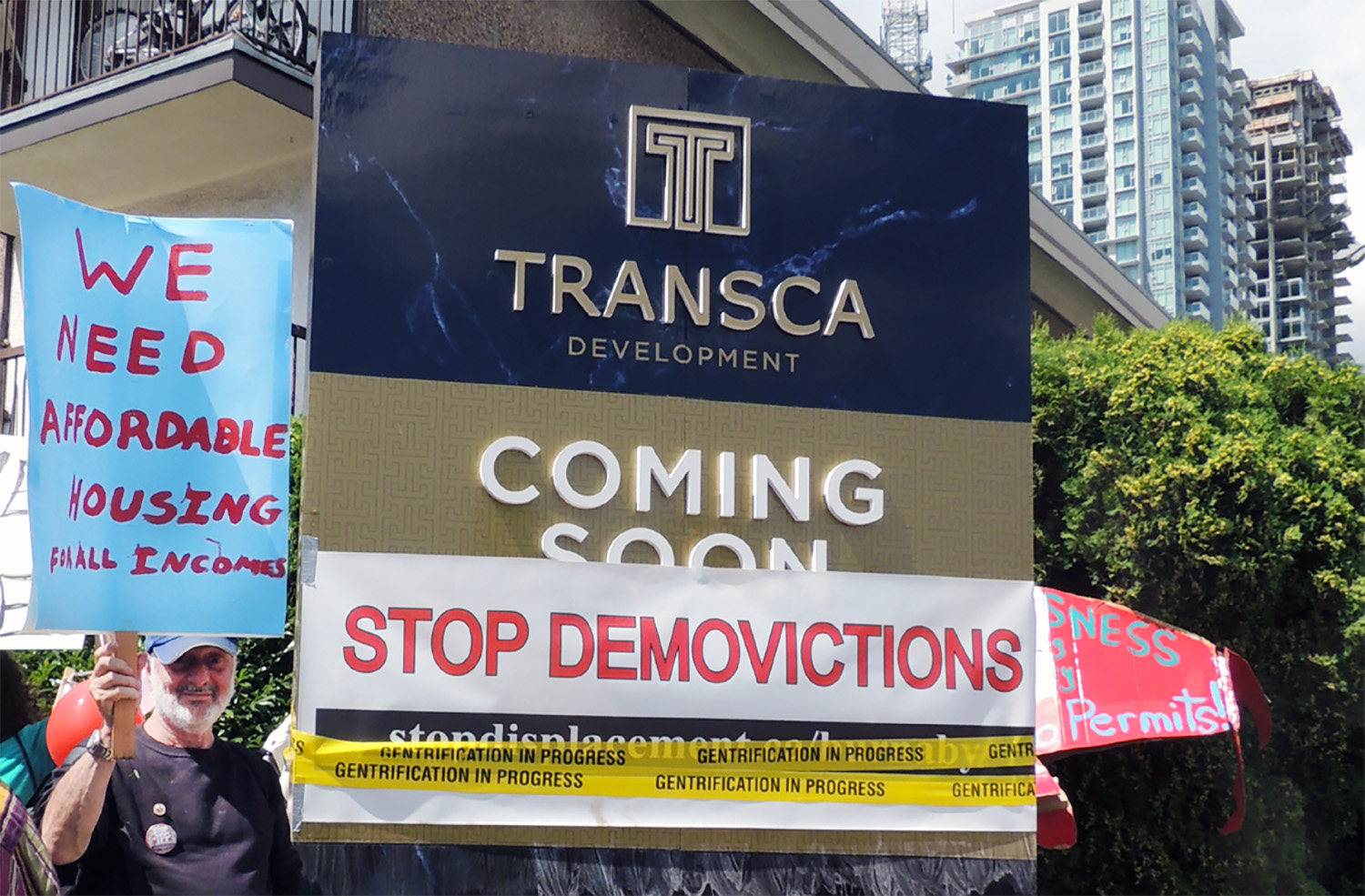BC’s Minister for the Environment and Climate Action Strategy, George Heyman, recently announced that the KGHM AJAX mine proposal, located within metres of the southern municipal boundary of Kamloops, has not received approval from the BC government to proceed with what would have been one of the largest open-pit mines in the world ever to be built right next to an urban centre.
Heyman stated that part of the reason the project was rejected was because of the opposition the project faced from local indigenous groups. It’s puzzling to see that Site C would be approved, however, despite an equal level of indigenous opposition. Of course there were notable differences between the two projects, especially where each drew its support and opposition.
The AJAX pit would have been within three kilometers of the nearest elementary school and within ten kilometers of several other schools, old age facilities, a university, a major hospital and all of Kamloops’ downtown core of businesses and residences. It would have also been upwind from all these places.
AJAX began splitting the Kamloops community when it was first being seriously bandied about in 2011. Many folks saw job opportunities and spin-off economic benefits. Many others saw potentially catastrophic environmental degradation and health impacts. Most progressives thought it was a terrible ecological step backwards and most conservatives proclaimed it as necessary economic growth for the area. The ruling class, however, was split – too many were vested in the status quo and not willing to change Kamloops’ business landscape for the sake of some foreign-owned mine.
Major opponents to AJAX included the Kamloops and District Labour Council (representing 13,000 workers) and nearly every environmentalist and doctor in the area. By 2014 there were a handful of grassroots organizations formed in opposition; among them were the Kamloops Physicians for a Healthy Environment, Code Blue (a collection of former miners and university professors), and the Kamloops Area Preservation Association (a collection of lifelong environmentalists), and nearly all indigenous peoples and nations in the area.
The major proponents did not coalesce into any particular group, but, they didn’t need to.
KGHM, the Poland-based billion-dollar international mining corporation, began hosting arena-sized pro-AJAX rallies and throwing tens of thousands of dollars around the community, slowly building alliances and silence from would-be opponents who were co-opted through KGHM’s “charitable” gifts.
KGHM gained some support, though not official, from the construction community, some Afton Mine miners (the smaller non-union underground mine also just south of Kamloops), and a mish-mash of industrial workers related to some of the local heavy industries, including the railways. Most importantly, however, was the support of the Liberal Party itself. KGHM was among the biggest donors to the BC Liberal Party, including a donation so large that it would nearly cover the entire cost of Liberal Party MLA Todd Stone’s 2017 re-election bid in the Kamloops-South Thompson riding, which is the riding in which AJAX would have been developed.
The Chamber of Commerce and the business improvement associations, although very closely tied, financially and ideologically, to the BC Liberals, didn’t take any formal position to support AJAX. Why not? Well, while Kamloops’ biggest employers are its hospital, schools, government services and university, its business-friendly city councils and mayors have largely re-branded Kamloops, over the last couple decades, as a tourist and tournament town with a busy airport, travel-train hub, and world-class ski hill only 30 minutes away. The pollution coming from AJAX, even under the most ideal circumstances, would surely have destroyed Kamloops’ claims to be a “nice weather – clean air” type of place to host events and tournaments as athletes and travelers would be receiving occasional “stay indoors” warnings on breezy days. It wouldn’t be long before other communities in BC easily took away Kamloops’ “Tournament Capital” brand thereby bankrupting the many tourist-catering businesses in Kamloops.
Fast-forward to BC’s provincial election of 2017 where AJAX remained a major issue in the Kamloops area: both North and South Thompson ridings had candidates from the Liberals, NDP, Greens and the Communist Party of BC (there was also a last minute Libertarian candidate in the South). Of all the parties only the Communist Party took an official stand against AJAX and even included it in their platform. The Greens hung their local candidates out-to-dry and refused to take a position, allowing their two candidates, alone, to take their own personal positions against AJAX.
While the Liberals won both ridings with over 50% support, the Greens and NDP split, almost evenly, the rest of the votes.
Many opponents of AJAX took note that the Green Party didn’t actually oppose AJAX, but, more importantly, many noted that the NDP were taking the same fence-sitting position that the mine’s active and closet proponents had been taking for all these years. The proponents and the NDP candidates said, “Let’s let the Environmental Assessment Process run its course,” despite the EAP’s fundamental flaws and opportunity for political interference in the final decision-making process.
The NDP, prone to the failures of social democracy, were not willing to stand with local activists on a clearly divisive issue that pitted the health and environmental interests of ordinary citizens against the demands of capital to exploit resources at any cost.
The Liberals were clearly in the pocket of the mining industry but could not build a consensus among its local business class to make it worth going one way or the other before the election; opposition from local activists had created many delays in the approval process and there was no way the Liberals could approve AJAX before the election without significant legal and political risk.
The Greens had no desire to interfere with industry’s desires if it meant raising some flags about their ability to shill for the corporate class – even in the face of something as outrageous as AJAX – which drew the ire of the vast majority of Kamloops’ activists – including their own party’s candidates.
Over the summer of 2017 the NDP and Greens agreed to a coalition of sorts with the NDP forming a minority government and the Greens agreeing to support them on confidence votes.
During that summer Kamloops’ city council also finally took a formal position against AJAX citing the many problems that KGHM failed to address in their most recent approval application to the provincial government. A few months later the NDP quashed the AJAX project.
But, when we look north to Site C, we see a lot of unanimity among the big and small business classes as well as from some well-paid trades workers in their support for that dam. Opposition is really only seen among locals who are having their land expropriated against their will, indigenous groups, food security advocates and environmentalists.
Premier John Horgan stated that they can’t afford not to build the dam – that they would lose up to $4 billion if they cancelled it rather than proceeding. And it was well known that AJAX would generate $1.3 billion during its 23-year lifespan.
So, what’s it worth to walk all over your commitment to work towards reconciliation as John Horgan did during the recent election? Apparently the $1.3 billion dollar loss of canceling AJAX was enough to absorb – especially given the opposition from people from all walks of life – including half the business class.
But the business class is not divided on Site C.
While the NDP has tried to create an arbitrary cost on what is affordable ($1.3 billion), and unaffordable ($4 billion), in terms of canceling a project and subsequently respecting indigenous opposition, what we really see is a pandering to the united business class backing Site C, disguised as a “too costly to not complete” argument, with clear contradictions in its own claims that they will respect indigenous communities and work towards real reconciliation.
Now we can look forward to Site C’s naming contest; I’ll suggest to Horgan we call it the “John A. MacDonald Dam” in recognition of all previous imperialist politicians who walked all over indigenous peoples and lands using the Crown’s so-called right to expropriate for the sake of capital’s demands for economic growth.
(Kerek is the organizer of the Kamloops Club of the Communist Party.)




